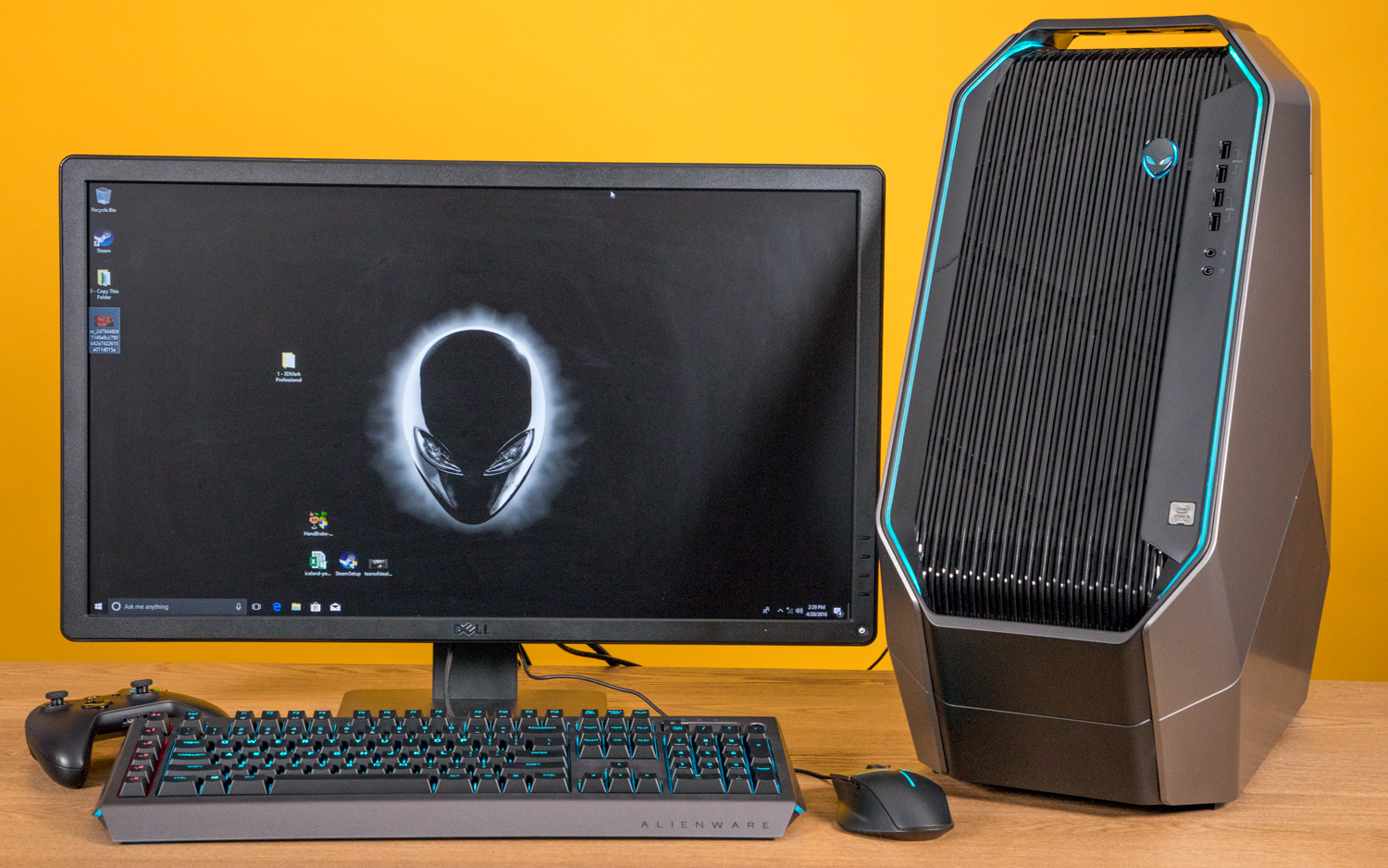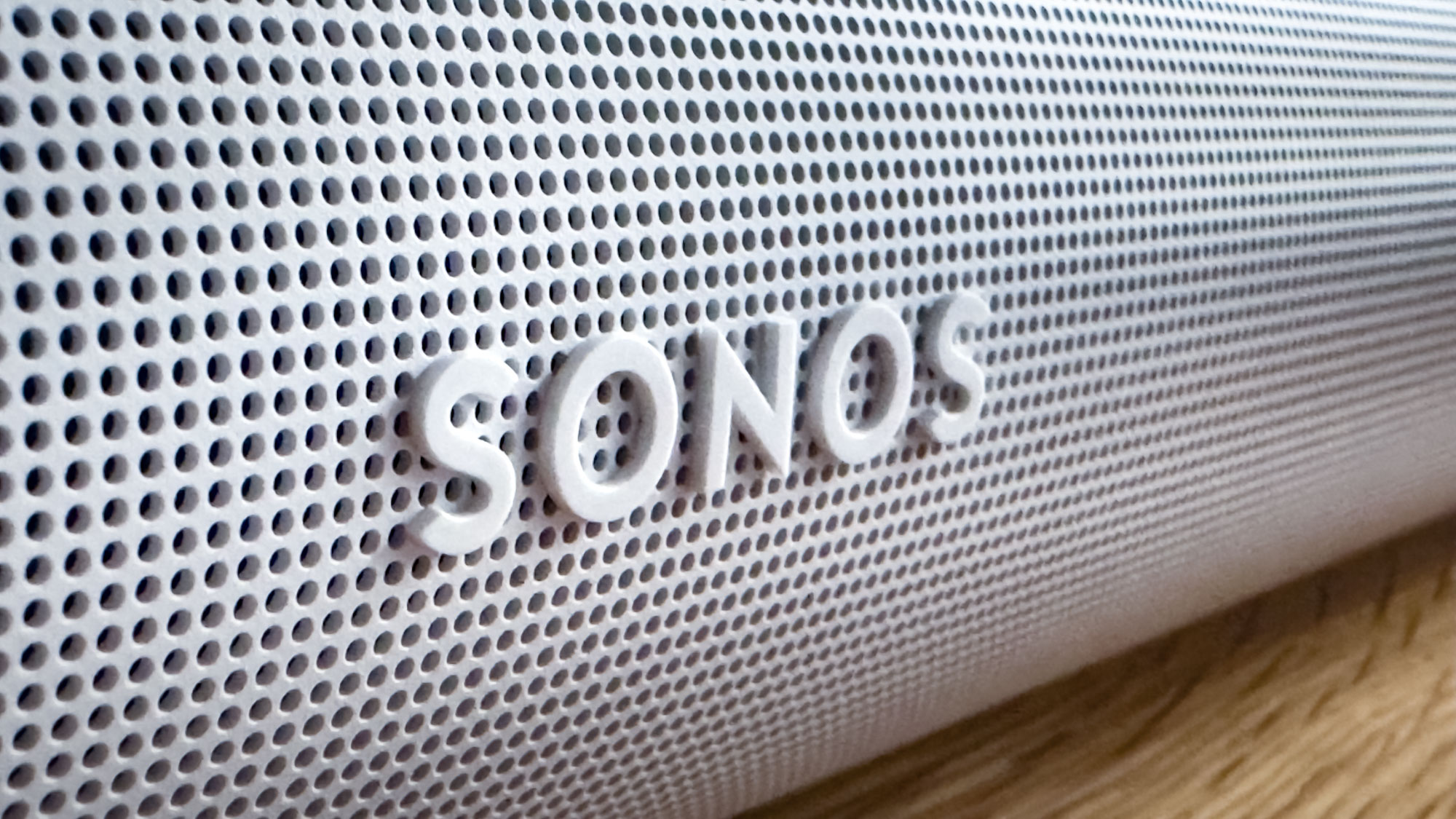Tom's Guide Verdict
The Alienware Area 51 offers a huge, attractive design that supports Core i9 processors and up to two Nvidia GTX 1080 graphics cards.
Pros
- +
Striking LED-lit design
- +
Blistering overall performance
- +
Easy upgradability
Cons
- -
Expensive
- -
Takes up lots of space
Why you can trust Tom's Guide
The Alienware Area 51 is back, and it's still a behemoth — in more ways than one. Alienware's flagship gaming PC brings some subtle but welcome changes to its signature goliath design, including easier upgradability, better airflow and support for Intel's blazing new Core i9 processors.
These new features, combined with the desktop's already excellent LED lighting and beastly gaming performance, make the Area 51 one of the best customizable high-end desktops for those with the cash (and space) for one.
Alienware Area 51 (2018) Key Specs
| Starting Configuration | As Tested | |
| Price | $1,899 | $6,659 |
| CPU | Intel Core i7-7800X | Intel Core i9-7980XE |
| GPU | Nvidia GeForce GTX 1050 Ti | Nvidia GeForce GTX 1080 (x2) |
| RAM | 8GB | 64GB |
| Storage | 2TB hard drive | 1TB SSD, 2TB hard drive |
| Size | 25.2 x 22.4 x 10.7 inches | 25.2 x 22.4 x 10.7 inches |
| Weight | 61 pounds | 61 pounds |
Design: Man, This Thing Is Big
The Alienware Area 51 continues to be one of the most unapologetically gargantuan gaming desktops on the market. Its massive, uniquely triangular chassis has big silver side panels and LED lights bleeding out of every edge, making it look less like a computer and more like a mysterious alien landing pod (there are no actual extraterrestrials inside — I checked).
At 25.2 x 22.4 x 10.7 inches, the Area 51 is a behemoth even by gaming desktop standards. It demands a similar amount of space as the Origin Millennium (24.8 x 21.4 x 9.75 inches), and towers over premium competitors such as the MSI Infinite (19.2 x 17.7 x 8.3 inches). The Area 51 weighs a staggering 61 pounds, though I have to give Alienware credit — thanks to the ergonomic handles on each corner of the triangular design, lifting and rotating the PC is actually manageable.
The big silver side panels and LED lights bleeding out of every edge making the Area 51 look less like a computer and more like a mysterious landing pod.
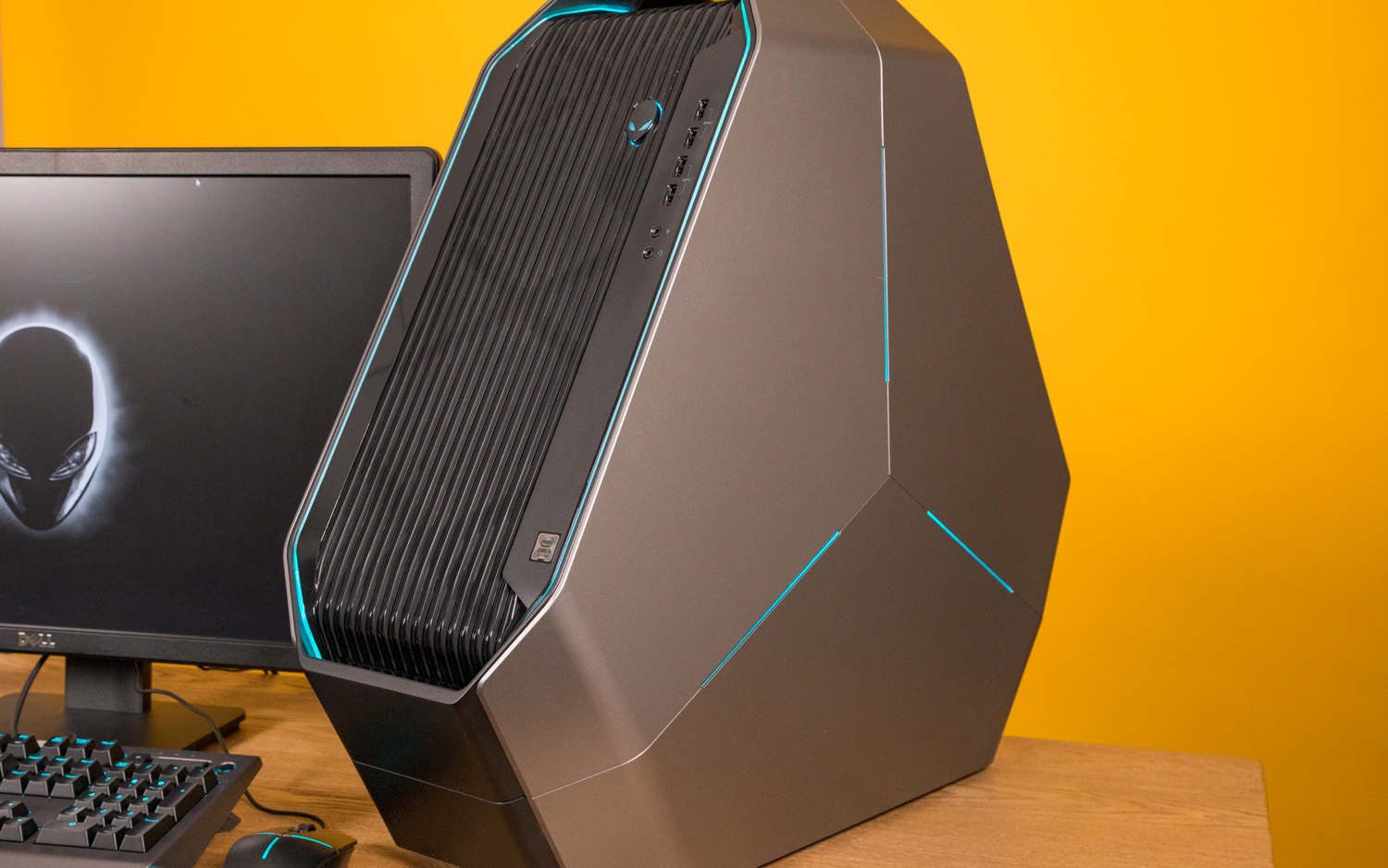
As with any Alienware product, the Area 51 is insanely customizable. The PC's Command Center app lets you customize its nine lighting zones to your heart's content, whether you want to have each LED strip glow a different hue or have the entire desktop smoothly pulsate through every color in the rainbow. You can even create lighting profiles that are tied to specific games.
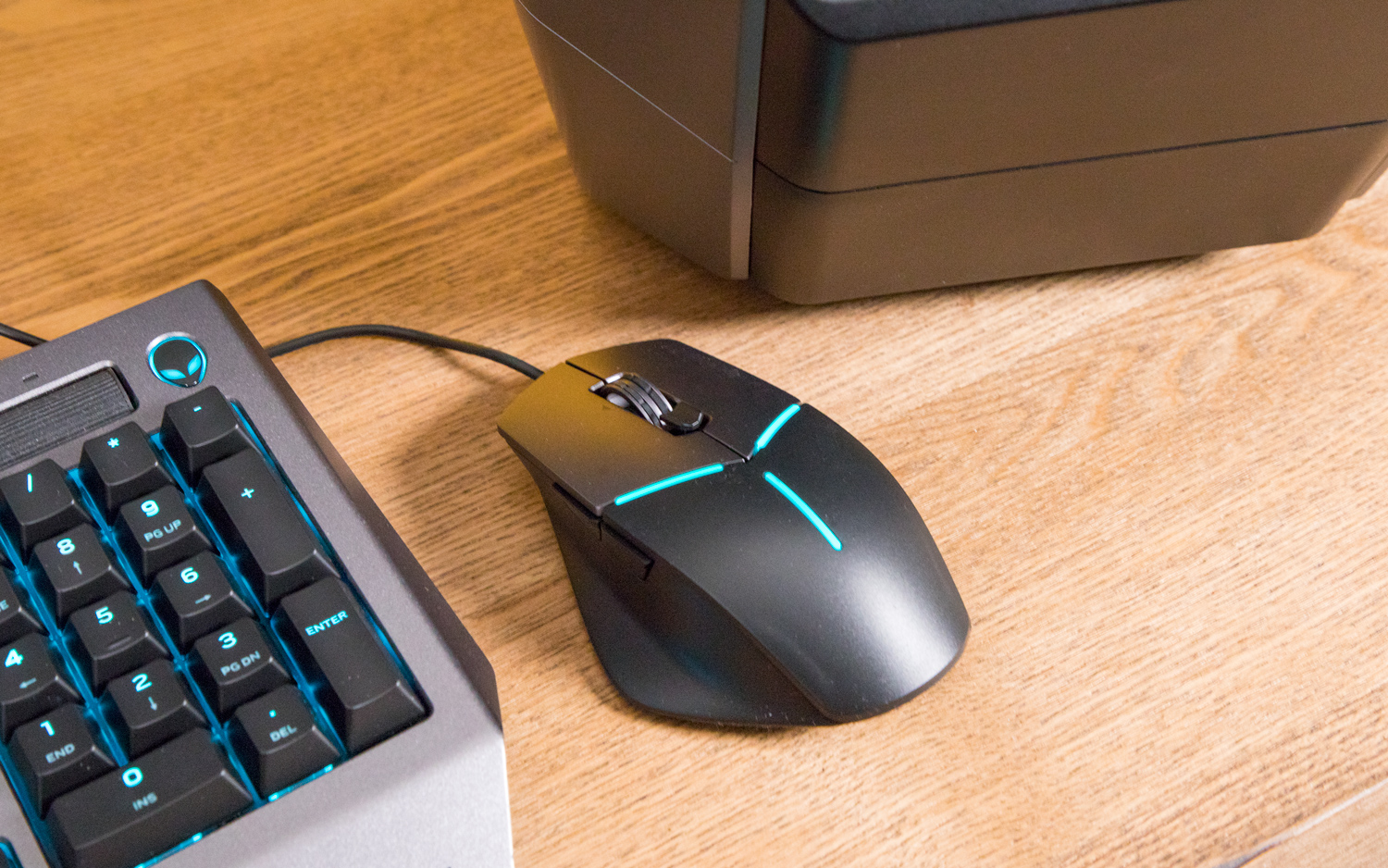
Tons of Ports, Easier Upgradability
The Area 51's front panel covers all of your plug-and-play basics, with two USB 3.1 SuperSpeed ports, two standard USB 3.1 ports and headphone and mic jacks.
Get instant access to breaking news, the hottest reviews, great deals and helpful tips.

In the back, you'll find six USB 3.1 ports, a USB 3.1 Type-C port, two USB 2.0 ports, dual Ethernet jacks and a full suite of audio ports. Each of the system's Nvidia GTX 1080 graphics cards pack three DisplayPorts and an HDMI port, giving you tons of options for connecting multiple monitors.
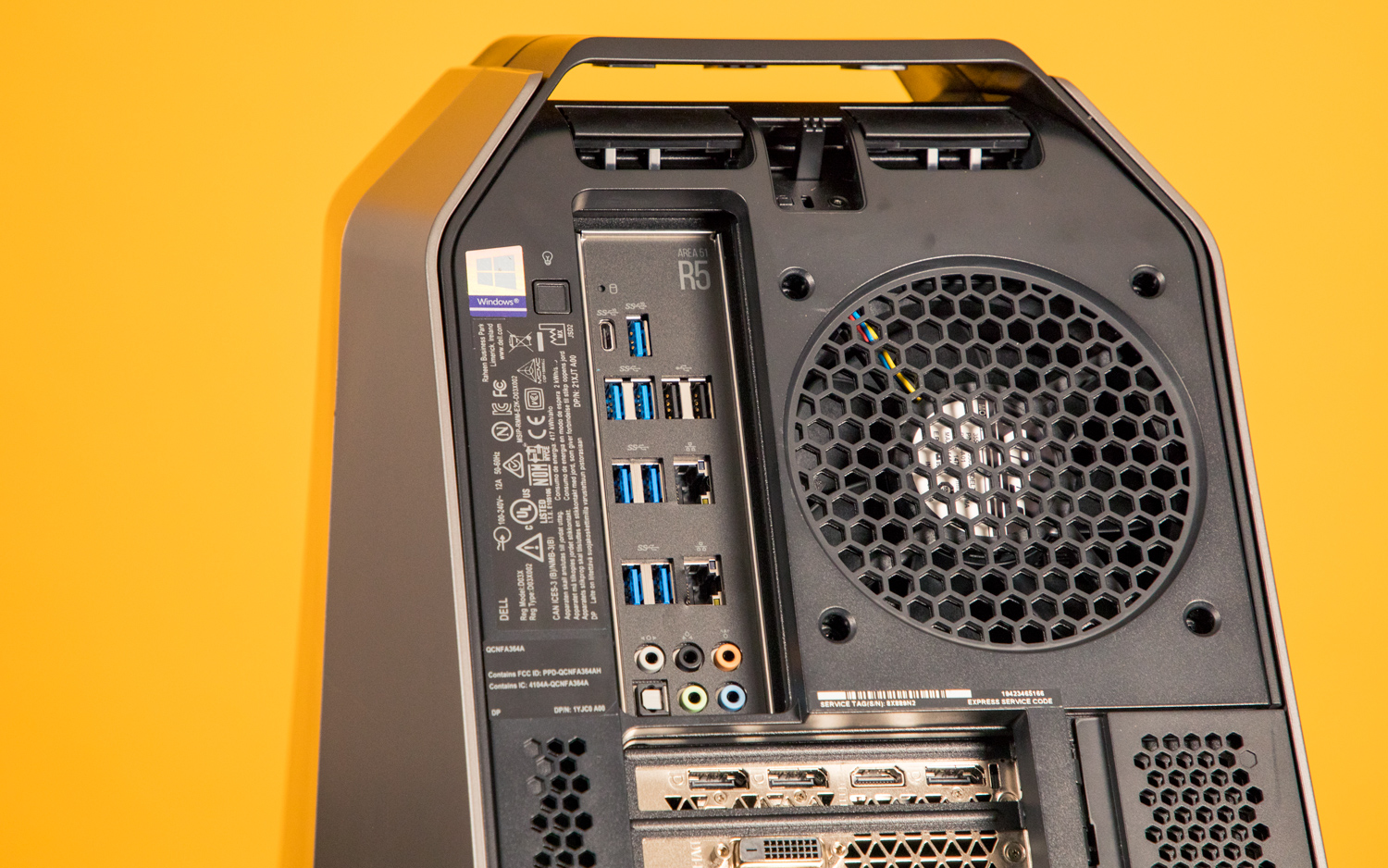
After removing a single screw from the Area 51's rear, I was able to pop off both side panels with a quick squeeze of a handle. From there, upgrading the Area 51 is pretty tool-free, whether you're swapping out RAM on the left ride or adding storage on the right. There's even a new GPU enclosure that you can swing open without a screwdriver for removing the system's graphics cards.
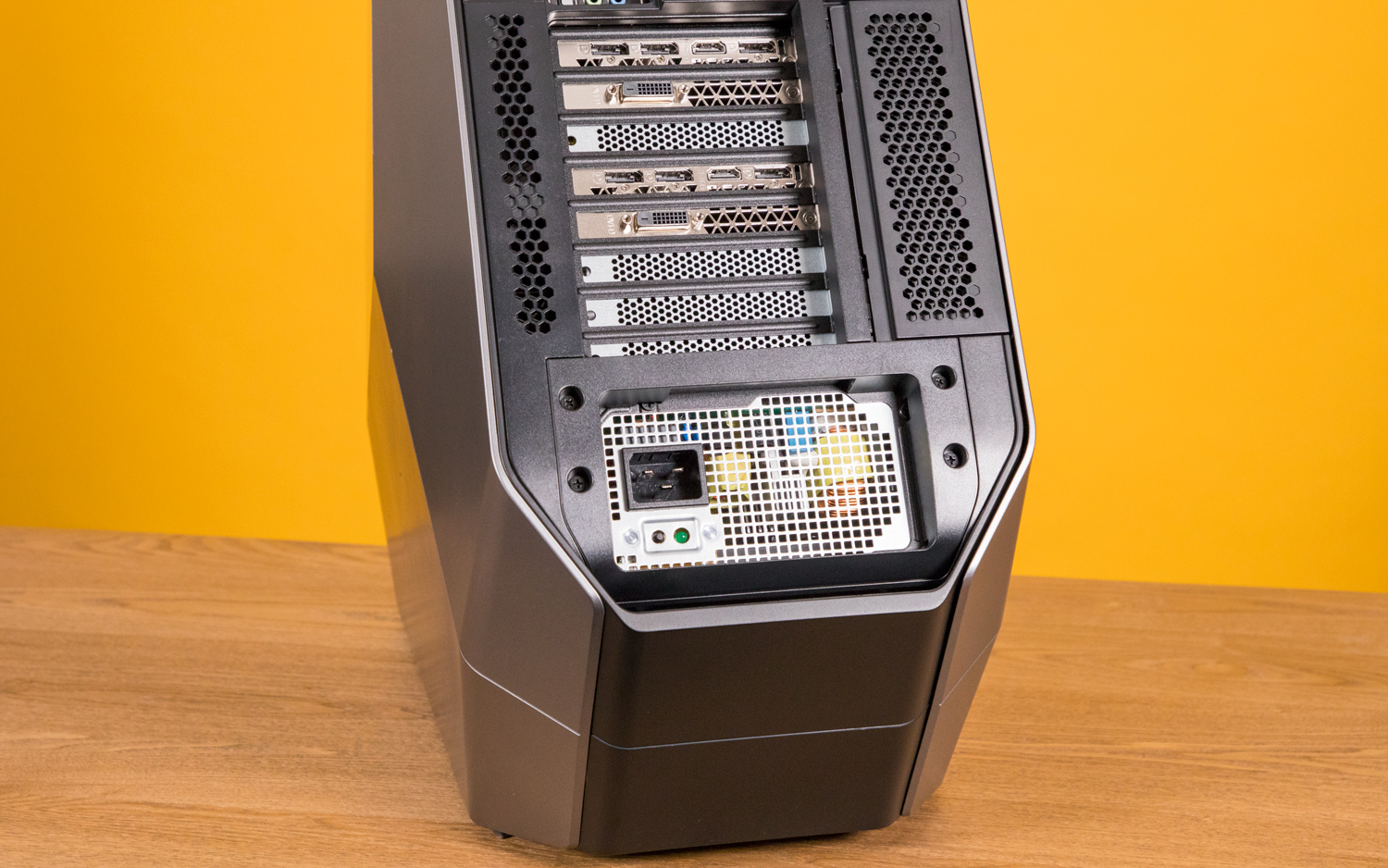
The whole process isn't quite as foolproof as it is on Alienware's smaller Aurora, but I still appreciated having a tool-free upgrade option on a system this packed with advanced tech.
Crazy Core i9 Power, Beastly Nvidia Graphics
As the first desktop we've tested with Intel's blazing new Core i9-7980XE processor, the Area 51 delivered appropriately beastly performance across the board.

The Area 51 demolished the Geekbench 4 general performance test with a score of 29,780, which is well above our Origin Millennium (21,301; Intel Core i7-8700K) and nearly twice as high as our 17,129 gaming desktop average.
Pair that power with two Nvidia GTX 1080 graphics cards, and you've got a legitimate gaming monster. The Area 51 made quick work of our max-settings Rise of the Tomb Raider benchmark, rendering the game's rich vistas at a buttery 82.8 frames per second (fps)at 1080p and a very solid 38 fps at 4K. That's slightly behind our Origin Millennium's dual 1080 Ti cards (92 fps at 1080p; 51 fps at 4K), but ahead of our gaming desktop averages (62/35 fps).
MORE: The Best Headsets for Immersive Gaming
Grand Theft Auto V at max settings was a similar story, with the Area 51 churning out a blistering 99 fps at 1080p and a smooth 50 fps at 4K. That trails the Millennium (142 fps/72 fps) and our 59 fps 4K average, but smokes our 73 fps 1080p average.
The Area 51 made quick work of Rise of the Tomb Raider, rendering the game's rich vistas at a buttery 82.8 frames per second at 1080p and a very solid 38 fps at 4K.
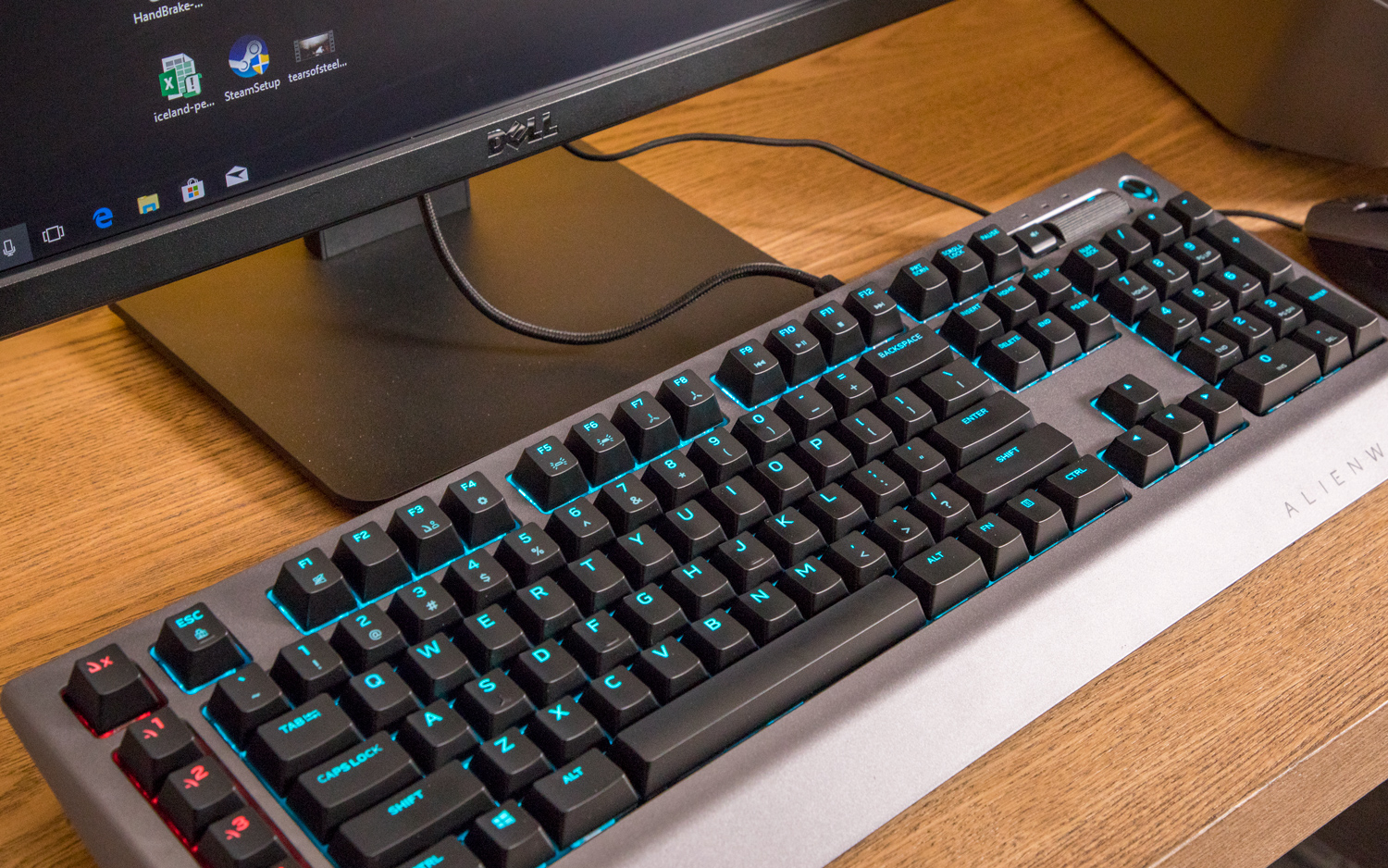
In case you're worried about a machine with dual graphics cards being able to run VR, know that the Area 51 maxed out the SteamVR Performance test with a perfect score of 11. That tops our 9.5 average, and makes it more than ideal for your Oculus Rift or HTC Vive.
Configurations
The Area 51 starts at $1,899, which gets you an Intel Core i7-7800X processor, Nvidia GTX 1050 Ti graphics, 8GB of RAM and a 2TB hard drive. This config is a bit of a tough sell — considering you can get GTX 1050 Ti systems for close to $1,000 less, you're really just paying for the giant design.
MORE: The Best Gaming Desktops Available Now
Stepping up to the $2,099 config gets you 16GB of RAM and a better GTX 1070 graphics card, while going for the $2,499 option nets you a Core i7-7820X CPU, a 128GB SSD in addition to the 2TB hard drive, and an Nvidia GTX 1080 Ti.
The Area 51 continues to be one of the best high-end desktops you can buy.
The high-end $4,599 model packs in a Core i9-7980XE processor, 32GB of RAM, a 512GB SSD with 2TB hard drive and Nvidia GTX 1080 graphics. We reviewed a souped-up $6,659 version of this config, with 64GB of RAM, a 1TB SSD and dual Nvidia GTX 1080 GPUs. If you're looking to make the most of the Area 51, you better have a high budget.
Bottom Line
The Area 51 continues to be one of the best high-end desktops you can buy. Its huge design is as attractive as it is ergonomic and practical, and its support for Intel Core i9 CPUs and dual Nvidia graphics cards makes it a monster for any kind of 4K and VR gaming. The slick, customizable LED backlighting certainly doesn't hurt either.
If you don't need to configure a $5,000 gaming monster, the Alienware Aurora ($799 starting) packs some of the Area 51's best features into a cheaper and smaller design. Those with a taste for high-end PCs should also consider the Origin Millennium ($1,736 starting), which is far more customizable at the point of purchase with tons of different paint and component options. But if you're looking for a big, beastly gaming machine that can tear through any task you throw at it, you'll find lots to like about the Area 51.
Credit: Shaun Lucas/Tom's Guide
Mike Andronico is Senior Writer at CNNUnderscored. He was formerly Managing Editor at Tom's Guide, where he wrote extensively on gaming, as well as running the show on the news front. When not at work, you can usually catch him playing Street Fighter, devouring Twitch streams and trying to convince people that Hawkeye is the best Avenger.
